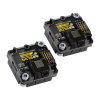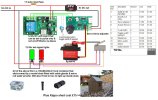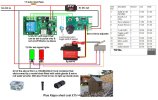collectors
Registered
Hi, anyone experimented & tried running servos on cat5 over a long distance, & if so, what was achieved. I can double up on cores to help. There seems to be the usual conflicted of opinions out there. It's for points on my RC battery set up. Thanks






